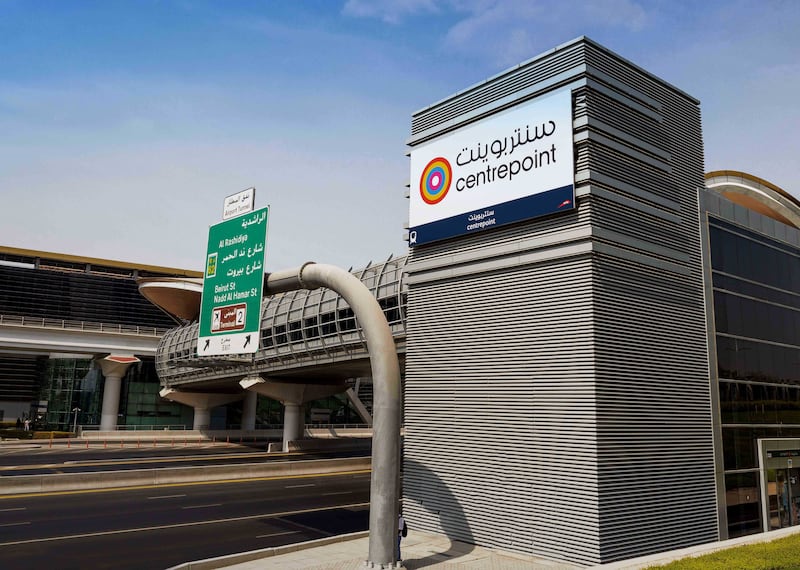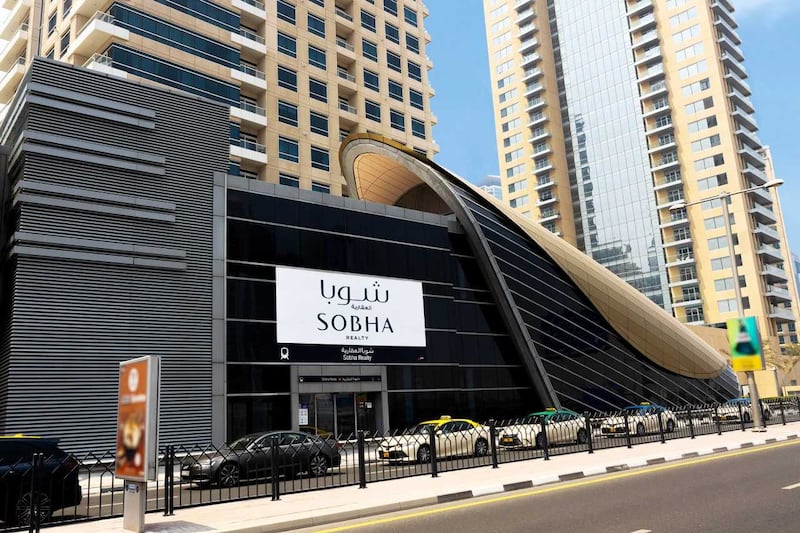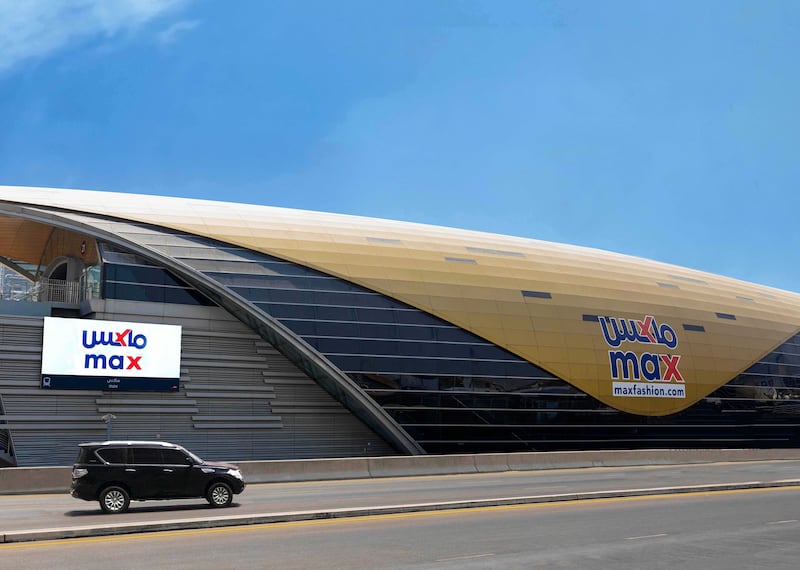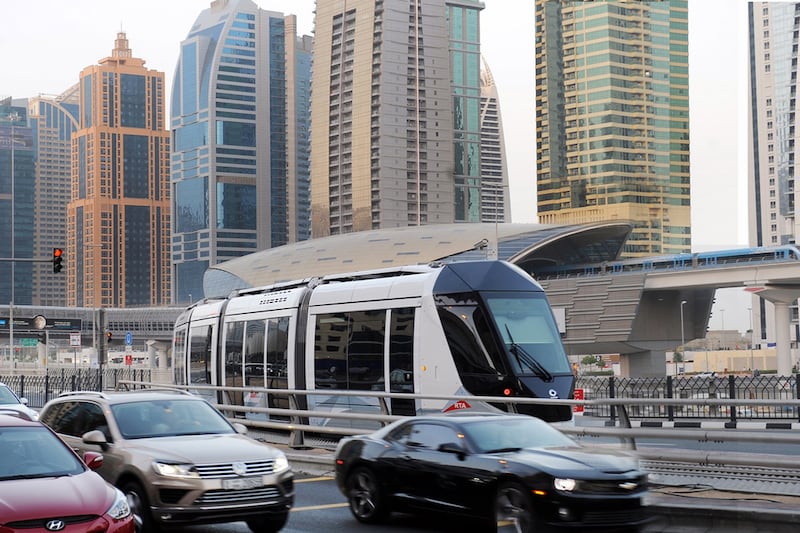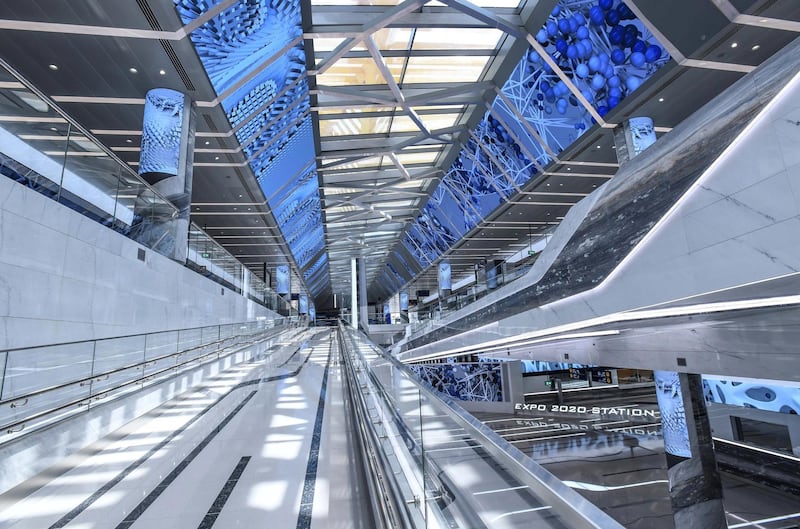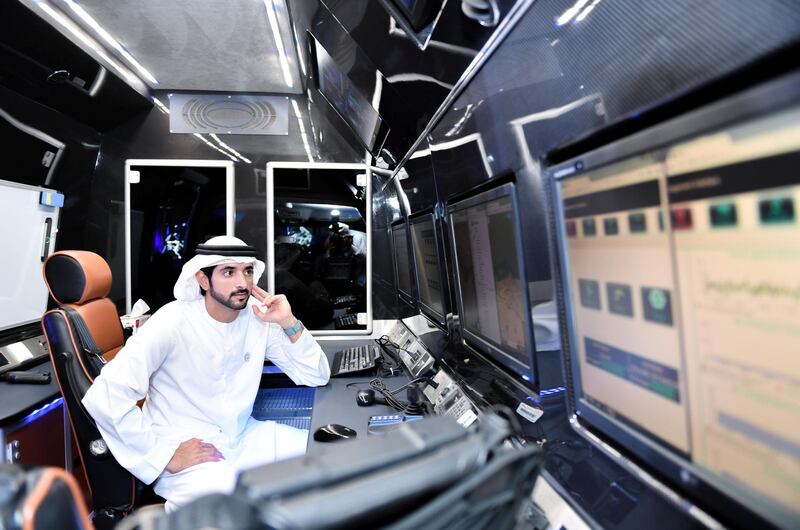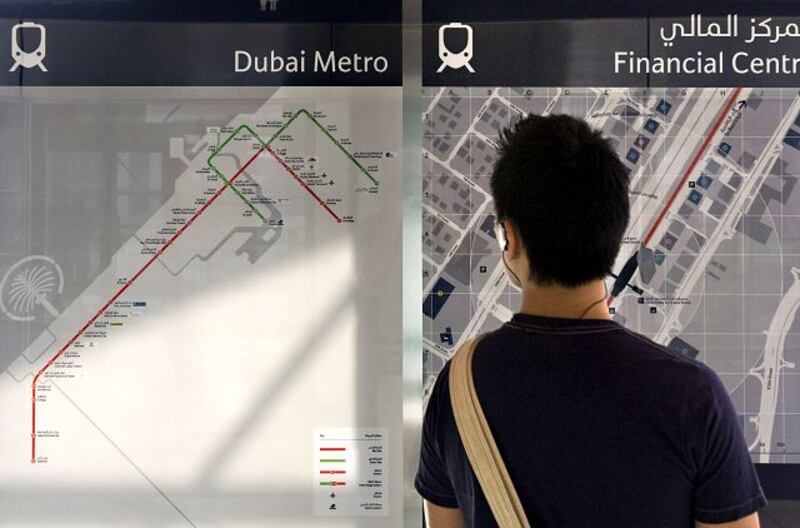The Gulf is gearing up for growth in the decades to come, with Dubai and Riyadh aiming to double their populations and significantly expand their economies.
Those ambitions will require the region's cities to focus on mobility, not only through building roads but by further enhancing public transport.
The UAE is taking steps to address its future needs with the 1,200km Etihad Rail route, which will connect the Emirates to the rest of the Gulf.
The opening of Dubai Metro in 2009 provided a blueprint for the future, offering an alternative to private cars, taxis and buses.
More than 621 million journeys were made on public transport in Dubai last year, with the metro accounting for 225 million of those trips, 40 million more than taxis and 70 million more than public buses.
It is not the only metro in the Gulf region because in Makkah a small seasonal system has been in operation since 2010, while Doha opened its 76km service in 2019.
Construction of Riyadh’s 176km metro is expected to be completed within the next year ready for a 2024 launch.
Call to treble number of Gulf metro lines
These projects are just the beginning. According to Effective Metro System and Investment, a new report from Strategy&, a consulting arm of the accountancy and professional services giant PwC, GCC cities now have about 400km of metro lines, but by 2030 will require a further 1,100km “to cope with projected growth”.
This will require, the report said, $220 billion in investment, although the direct and indirect socioeconomic benefits could be several times as large.
“Metros bring a lot of comfort and reliability for the user, especially driverless systems. It’s very safe and functional and a high-frequency system,” said Jean-Christophe Chuniaud, senior vice president, international east, at Systra, the company that developed Dubai Metro after carrying out its feasibility study.
“In Dubai … about 20 per cent of the population uses the metro. That’s 20 per cent less traffic on the road, 20 per cent pollution reduction, time saved, and saving on road infrastructure. It makes the cost of transport cheaper. A metro ticket is much cheaper than maintaining a car.”
Peter Schwinger, an independent transport consultant in Belgium who worked on transport planning for Abu Dhabi’s Department of Transport from 2013 to 2015, also pointed out that Dubai Metro has scaled up public transport usage in the city.
“Dubai, they have a metro … the percentage of trips done by public transport is above 15 per cent,” he said. “Then you look at all the other cities — Kuwait, Bahrain [Manama], Abu Dhabi, Sharjah — below 5 per cent.”
Many of these other places are keen not to miss out. Bahrain is developing a rail system, while cities including Abu Dhabi, Muscat, Jeddah, Damman and Kuwait City are looking to do the same.
China, India and Brazil are among the long list of developing nations to have invested heavily in urban rail in recent decades, while developed nations have also inaugurated networks in addition to earlier systems in North America and Europe that date back as far back as the 1800s.
Prof Peter White, emeritus professor at the University of Westminster in the UK and author of Public Transport: Its Planning, Management and Operation, said metros typically suit large, high-density cities where there is a level of demand that justifies the big investments required. Highly concentrated employment suits a system of radial movements from suburbs into the centre.
Helping to cut congestion
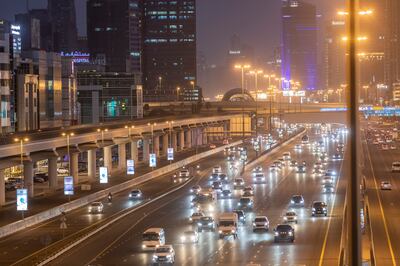
The way that many rail systems avoid the congestion of roads is key to their ability to attract drivers out of their cars.
When they work well, they can attract higher-income passengers, which helps to maximise ridership, frequency and revenue.
Actually turning a profit with a metro is not easy, but there are examples where urban rail is tied up with land ownership that has proved profitable.
Dr Kari Edison Watkins, an associate professor of civil and environmental engineering at the University of California, Davis, cited the Tokyo and Hong Kong networks as examples that have performed well financially.
“The system in Tokyo is simply amazing,” she said. “Much of the reason they’ve been able to build this quality transit system is because they’ve coupled land use to the provision of transit.
“They have much higher density along the transit line … Many lines are privately owned. The companies own the property and the line and reap the benefit of the higher densities.”
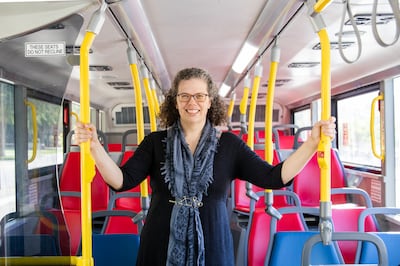
Cities, where urban rail transport has tended not to work so well, are those, Dr Watkins said, where the authorities compromised in terms of giving the system a dedicated space. This can even result in parked cars getting in the way of rail vehicles, compromising speed and reliability.
The layout of some Gulf cities poses difficulties to the successful implementation of urban rail, according to Dr Alexandra Gomes, a research fellow at the London School of Economics who has researched Abu Dhabi and Kuwait City.
“In many of the Gulf cities, people who drive live in areas that are low density, [which are] less attractive to place mass transit infrastructure,” she said.
“And people who don’t drive, they live in high density. You will improve their lives [by building a metro], of course, because they will have a more reliable system.
“But at the same time, if your objective is to take the cars out of the streets, if you want to reduce pollution, if you want to increase the levels of health, then you have to connect to the low density. There is a mismatch.”
She suggested, however, that some of the region’s cities may be able to address issues related to housing types and density to make them more amenable to urban rail.
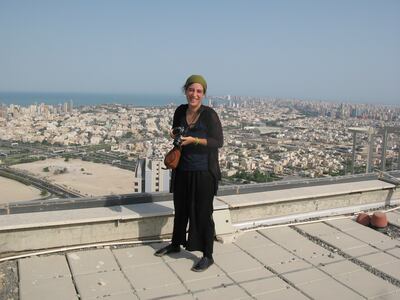
Keeping eco goals on track
A well-planned metro system is likely to offer “agglomeration benefits”, which Mr Schwinger said were “largely untapped” at the moment.
These include better access to the labour market for employees and greater access to workers for employers. Improved productivity is another benefit.
Heavy investments in public transport have also been described as necessary if Gulf nations are to achieve their net-zero goals.
With all these potential benefits, what has often held the Gulf back when it comes to investing in metros?
Cost is an obvious factor, as is the disruption to traffic during construction and, said Mr Schwinger, the reality that it can be difficult to explain to Gulf citizens the benefits of a system for which they are not the key target market.
Many factors for or against metros and other urban rail systems centre on economics, but Dr Watkins also highlights that an effective system used by a wide range of people influences the nature of society. There are quality-of-life benefits to both the individual and the community.
“The great thing about metro systems is they’re very equitable,” she said. “Everybody can use the metro; you’re interacting with everybody from your community. That’s good for a community — to be doing something collectively.”


